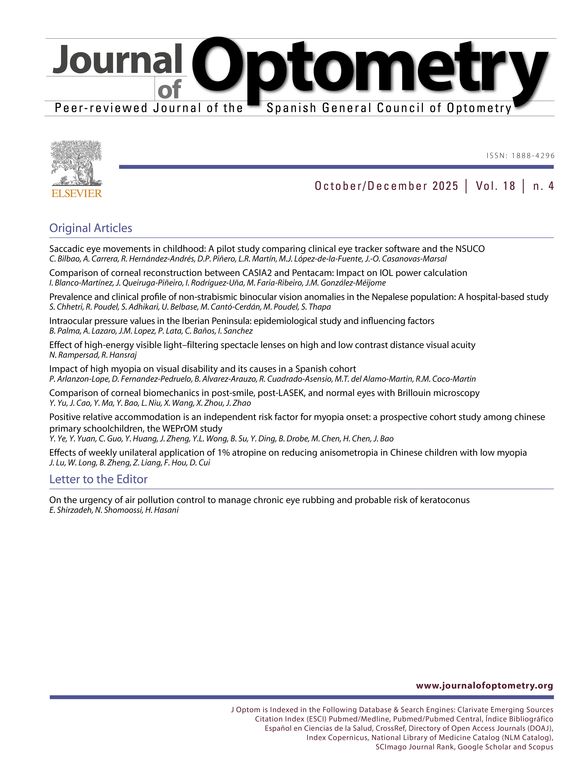To the Editor,
We have read with great interest the article entitled “Prevalence of astigmatism among 99,515 children in different areas of Xi'an City, China” by Zhang et al.1 We congratulate the authors on conducting a multifactorial analysis of the issue of astigmatism in the pediatric population. In particular, we would like to highlight the fact that the study includes a large cohort of participants (99,515 individuals). The researchers' attention to ensuring comparable testing conditions for all participants is commendable, as it positively influences the reliability of the obtained results. The study analyzes the prevalence of astigmatism in the pediatric population in relation to age, gender, residential area, and co-occurrence of astigmatism with myopia.
In their analysis, the authors classify astigmatism based on the location of the steep meridian (with the rule, against the rule, oblique). While this classification provides valuable data, it has limited clinical significance.
Given the extensive scope of this study, we would like to suggest further considerations for future research of a similar nature. It would be valuable to supplement the analysis of diagnosed astigmatism with a classification based on its anatomical location (corneal, intraocular).2 The distinction of a group of patients with corneal astigmatism is of great clinical importance, as high-value corneal astigmatism is a strong risk factor for the development of keratoconus (KCN) in the pediatric and young adult population.3
Keratoconus is a type of ectasia characterized by progressive thinning and bulging of the central and paracentral cornea. The prevalence of KCN has been estimated to range between 0.2 and 4790 per 100,000 persons with the highest rate typically occurring among Middle Eastern and Asian ethnicities. Onset usually occurs in adolescence and progresses until the age of 30–40. It almost always occurs bilaterally and asymmetrically. KCN can dramatically impair vision and may lead to significant disability.4 It should be emphasized that keratoconus presents a more aggressive course when symptoms appear in childhood than in adults.5
The detection of corneal astigmatism during screening is possible through keratometry, which is a non-invasive and widely available examination. It allows the identification of patients with high corneal astigmatism values who should undergo further diagnostics, including corneal tomography.6,7 This is particularly important as early detection of KCN improves the prognosis for visual acuity in the future. The treatment of keratoconus through the cross-linking procedure aims to halt the progression of the disease, allowing patients to maintain functional vision throughout their lives.8,9
Nevertheless, we understand the complexity of the issue addressed by the authors in their study and appreciate the inclusion of such an important topic and numerous variables in the conducted research.
In summary, we consider this report to offer a different perspective on the discussed issue. We are confident that expanding your analysis to include the identification of patients with high corneal astigmatism values could add significant clinical relevance to your study. Implementing this suggestion could maximize the immense potential of your research, facilitating early detection of keratoconus.







